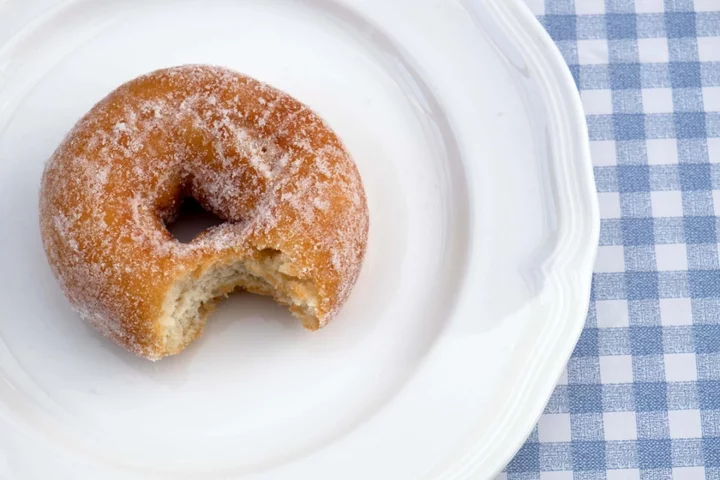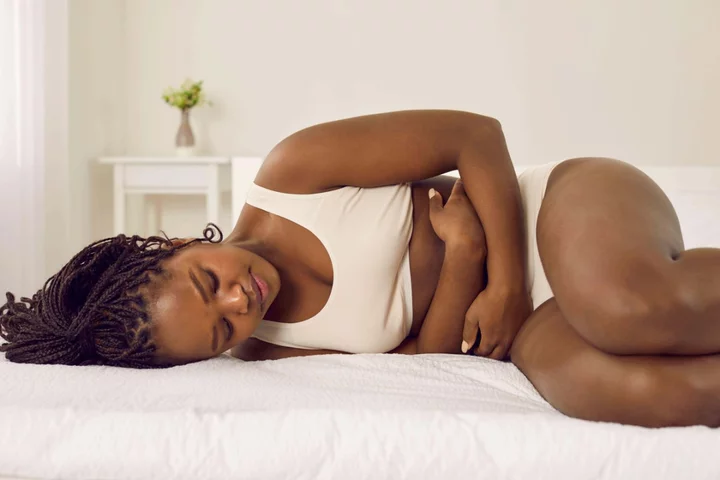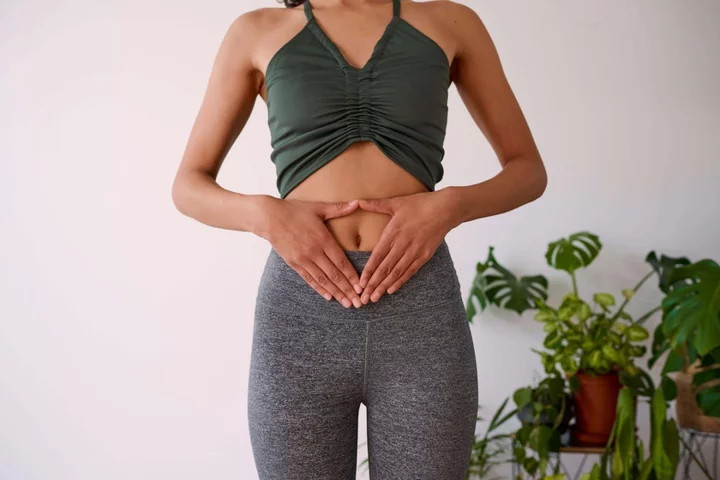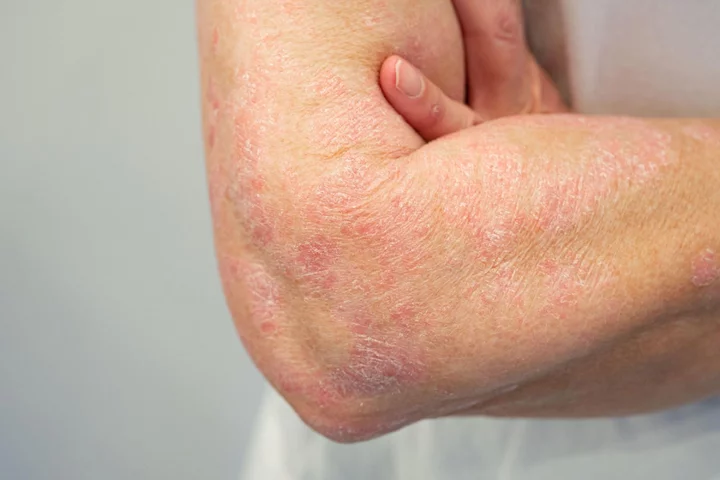
Consuming foods with added sugars may increase risk of kidney stones – study
Consuming foods with added sugars – such as soft drinks, ice-cream and cakes – may increase the risk of developing kidney stones, according to scientists. Researchers have found that those in the US with the highest intake of added sugars had nearly 40% greater odds of developing kidney stones. They said this association was more prevalent among Asians as well as Native Americans. But the researchers pointed out that their study, published in the journal Frontiers, does not show how exactly added sugars increases the risk of kidney stones. Lead author Dr Shan Yin, a researcher at the Affiliated Hospital of North Sichuan Medical College, Nanchong, China, said: “Ours is the first study to report an association between added sugar consumption and kidney stones. “It suggests that limiting added sugar intake may help to prevent the formation of kidney stones.” One in 11 people will get stone symptoms during their lifetime, according to The British Association of Urological Surgeons. Ours is the first study to report an association between added sugar consumption and kidney stones. Dr Shan Yin Known risk factors include obesity, inflammatory bowel disease, diabetes, and being an adult male. For the study, the Dr Yin and colleagues analysed data from more than 28,000 people who were part of the US National Health and Nutrition Examination Survey (NHANES) survey. Each person’s daily intake of added sugars was estimated from their self reported food and drink consumption. They also received a healthy eating index score (HEI-2015), based on the food they ate, whether it was beneficial foods such as fruits, vegetables, and whole grains, or less healthy options such as refined grains or saturated fat. The researchers adjusted for factors such as gender, age, race or ethnicity, income, body mass index, HEI-2015 score, smoking status, and whether the people taking part in the study had a history of diabetes. The researchers said people who received more than 25% of their total energy from added sugars had a 88% greater odds than those who had less than 5% of their total energy from added sugars. Results also showed people below poverty levels had greater odds of developing kidney stones when exposed to more added sugars than those at or slightly above poverty levels. Dr Yin said: “Further studies are needed to explore the association between added sugar and various diseases or pathological conditions in detail. “For example, what types of kidney stones are most associated with added sugar intake? “How much should we reduce our consumption of added sugars to lower the risk of kidney stone formation? “Nevertheless, our findings already offer valuable insights for decision-makers.” Read More Charity boss speaks out over ‘traumatic’ encounter with royal aide Ukraine war’s heaviest fight rages in east - follow live Why TikTok is going wild for lip oil 5 late summer blooms to plant now Why have the birds disappeared from my garden?
2023-08-04 15:57

3 great abs exercises that aren’t crunches
Most of us have been guilty of doing a huge number of crunches in the hope of making our tummies trimmer. Then, two weeks later, we’re disappointed nothing seems to have changed. “Think abs and we tend to think ‘six-pack’ (visible or not) – the long muscle that extends along the front of the abdomen,” says PT and fitness expert, Laura Williams. “This often makes crunches our go-to move when it comes to the tum. But the abdominal muscles also include your waist muscles – your obliques – and one of your main core muscles, the transversus abdominis.” Targeting these areas, she says, with a variety of exercises, will help to strengthen all the important muscles of the abdominal area, as well as those in the upper back and hips, helping with everything from a stronger core to preventing injury. 1. Heel Tap Why: Works core muscles. How: From a lying position with legs bent above hips, lower one heel towards the floor, then lift back up. Change sides. Do a total of 12 lowers. Tip: Try to keep your back flat on the mat. 2. Seated Sprinter Why: Works the waist, hip and thigh muscles. How: From a seated position, with both legs off the floor, extend one leg out in front of you and bring the opposite arm towards your inside knee. Repeat on the other side. Do a total of 12 twists. Tip: Keep your torso lifted throughout. Place feet on the floor to make this easier if needed. 3. Pulsing Side Plank Why: Works the shoulder, hip, thigh and waist muscles. How: Lying on your side, raise your body into the air with your weight on the side of your foot and your bottom arm. Rest your top arm on your bottom shoulder and lower your body a short way to the ground before pushing back up. Do 15 pulses. Change sides. Tip: Reduce your range of movement if you fatigue. Read More Charity boss speaks out over ‘traumatic’ encounter with royal aide Ukraine war’s heaviest fight rages in east - follow live Twiggy: I did not plan to get into modelling ‘Women short-changed as 65% of weekly working hours ignored in official data’ How to wear the casual tailoring look in summer
2023-08-03 16:26

What is premenstrual dysphoric disorder?
Premenstrual Dysphoric Disorder (PMDD) is a severe form of premenstrual syndrome (PMS), and is thought to affect more than one in 20 menstruating women. Actor and stand-up comedian Bella Humphries suffers from PMDD, and told the BBC: “My period sometimes makes me want to take my life.” According to the International Association for Premenstrual Disorders (IAPMD), 34% of the people who have been diagnosed with the condition have attempted suicide. Humphries, 29, continued: “It’s secrecy and silence that will kill people, not the disease or the disorder.” According to the IAPMD, it takes on average 12 years to be diagnosed with the condition. Here’s everything you need to know about it… What is PMDD? PMDD is a severe form of PMS, and is characterised by debilitating physical and emotional symptoms that occur during the time between ovulation and when the period is due to begin. This is known as the luteal phase and lasts around two weeks – although the length can vary from person to person. In June 2019, the World Health Organisation (WHO) added PMDD to the International Statistical Classification of Diseases and Related Health Problems, meaning it’s now recognised as a legitimate medical diagnosis. What are the symptoms? People with PMDD might experience a broad range of symptoms, and it’s different for everyone. “In PMDD, symptoms are extreme and can seriously impact quality of life, work and relationships. Many women report feeling suicidal,” said Dr Ghazala Aziz-Scott, a specialist in integrative women’s health and bioidentical hormone balancing for the Marion Gluck Clinic. “Symptoms can be cyclical and chronic – they include mood swings, anger, irritability, anger, anxiety, depression, anhedonia [the reduced ability to experience pleasure], fatigue, and brain fog. Physical symptoms include breast tenderness, headaches, bloating, food cravings, and insomnia.” Are there any treatments? Treatments can include “antidepressants, oral contraception and counselling”, said physician associate Simisola Ade. “A discussion with a doctor should be had to decide on what treatment is appropriate and how bad the PMDD symptoms are.” Aziz-Scott continued: “PMDD has a complex aetiology [causes] and it is vital to evaluate the root cause of the hormonal imbalance and if there are also any coexisting psychiatric conditions. “A healthy diet and good lifestyle can go a long way in supporting the body, B6 and magnesium supplementation are helpful and the use of natural progesterone in the second half of the cycle can be very beneficial.” What other things can people do to help? “Women who have PMDD need to be mindful and easy with themselves. Self-care is very important,” said Ade. “Also keeping a cycle diary is key, especially if you suspect you have PMDD, because some people aren’t aware that they have PMDD until they actually start tracking their symptoms and notice that they are cyclical. This can also help diagnosis and treatment be much quicker. “Talking to other people who have PMDD can be very beneficial too. There are international organisations that can help. Be open with your doctor and tailor treatments for yourself to ensure you put things in place when you are in that luteal phase. Getting to know your PMDD symptoms will help to make those symptoms more bearable.” Dr Adiele Hoffman, medical advisor at Flo Health agrees and said: “It’s very common to experience both emotional and physical discomfort in the days leading up to your period. However, these symptoms should not be so severe that they significantly impact your life, work, your family, or your other relationships. “But if they do, however, consistently affect your life, you should show these logs to a doctor. It can be very helpful for the doctor prescribing appropriate treatment. Most importantly, remember that no one should have to live with debilitating PMDD symptoms.” Read More Charity boss speaks out over ‘traumatic’ encounter with royal aide Ukraine war’s heaviest fight rages in east - follow live JW Anderson is teaming up with a major tennis star for new collection N-Dubz cement comeback with first new album in 13 years Irregular sleep patterns linked to harmful gut bacteria, study suggests
2023-08-02 21:54

Irregular sleep patterns linked to harmful gut bacteria, study suggests
Irregular sleep patterns may be linked to harmful bacteria in your gut, new research suggests. The study is the first to find multiple associations between social jet lag – the shift in internal body clock when sleeping patterns change between workdays and free days – and diet quality, diet habits, inflammation and gut microbiome (bacteria) composition. According to the findings, even a 90-minute difference in the midpoint of sleep – half-way between sleep time and wake-up time – can encourage microbiome that has negative associations with health. Previous research has suggested that working shifts disrupts the body clock and can increase risk of weight gain, heart problems and diabetes. This is the first study to show that even small differences in sleep timings across the week seems to be linked to differences in gut bacterial species Dr Wendy Hall King’s College London However, according to researchers from King’s College London there is less awareness that the body’s biological rhythms can be affected by smaller inconsistencies in sleeping patterns. This is due to people working regular hours waking early with an alarm clock on workdays compared to waking naturally on non-workdays. Senior author Dr Wendy Hall from King’s College London, said: “We know that major disruptions in sleep, such as shift work, can have a profound impact on your health. “This is the first study to show that even small differences in sleep timings across the week seems to be linked to differences in gut bacterial species. “Some of these associations were linked to dietary differences but our data also indicates that other, as yet unknown, factors may be involved. “We need intervention trials to find out whether improving sleep time consistency can lead to beneficial changes in the gut microbiome and related health outcomes.” First author Kate Bermingham, from King’s College London and senior nutrition scientist at ZOE, said: “Sleep is a key pillar of health, and this research is particularly timely given the growing interest in circadian rhythms and the gut microbiome. “Even a 90-minute difference in the mid-point of sleep can encourage microbiota species which have unfavourable associations with your health.” Researchers suggest the composition of the microbes in the gut may negatively or positively affect health by producing toxins or beneficial products. Specific species of microbes can correspond to an individual’s risk of long-term health conditions such as diabetes, heart disease and obesity. The microbiome is influenced by what food someone eats, which makes the diversity of the gut adjustable. Researchers assessed a group of 934 people from the ZOE Predict study, the largest ongoing nutritional study of its kind. They looked at blood, stool and gut microbiome samples, as well as glucose measurements in people whose sleep was irregular compared to those who had a routine sleep schedule. Unlike past research, the group consisted of mainly lean and healthy individuals with most of them getting more than seven hours sleep throughout the week. The study, published in The European Journal of Nutrition, found that just a 90-minute difference in the timing of the midpoint of sleep is associated with differences in what the gut microbiome is made up of. According to the findings, having social jet lag was associated with lower overall diet quality, higher intakes of sugar-sweetened beverages, and lower intakes of fruits and nuts. This may directly influence the abundance of specific microbiota in the gut, researchers say. Three out of the six microbiota species more abundant in the social jet lag group have what researchers describe as unfavourable associations with health. They are linked with poor diet quality, indicators of obesity and cardiometabolic health, like heart attack, stroke, and diabetes, and markers in your blood related to higher levels of inflammation and cardiovascular risk. Previous research has found social jet lag is associated with weight gain, chronic illness and mental fatigue. Dr Sarah Berry from King’s College London and chief scientist at ZOE added: “Maintaining regular sleep patterns, so when we go to bed and when we wake each day, is an easily adjustable lifestyle behaviour we can all do, that may impact your health via your gut microbiome for the better.” Read More Charity boss speaks out over ‘traumatic’ encounter with royal aide Ukraine war’s heaviest fight rages in east - follow live N-Dubz cement comeback with first new album in 13 years Babies as young as four months have taste in fine art, study shows ADHD symptoms in children can be transformed with brain stimulation therapy
2023-08-02 17:28

Babies as young as four months have taste in fine art, study shows
Our taste in fine art can develop from a very early age, researchers have said, after they found babies as young as four months can demonstrate artistic preferences. When shown landscapes by the Dutch post-impressionist painter Vincent van Gogh, psychologists at the University of Sussex found both babies and adults mostly favoured the same paintings, with Green Corn Stalks (1888) proving to be the most popular. The team at the university’s Sussex Baby Lab also uncovered that infants liked paintings that had more edges – such as those featuring leaves or branches – and curved lines. In their findings, published in the Journal of Vision, the researchers said aspects of artistic preferences may be hardwired from an early age. Our study also appears to have identified features of adult aesthetics that can be traced back to sensory biases in infancy Philip McAdams Philip McAdams, a doctoral researcher at the University of Sussex and lead author on the paper, said: “It was fascinating to find that babies respond to the basic building blocks of the paintings, such as edges and colours, and that these properties could explain large amounts of why babies look at, and adults like, particular artworks. “Our study also appears to have identified features of adult aesthetics that can be traced back to sensory biases in infancy. “Our findings show that babies’ visual systems and visual preferences are more sophisticated than commonly thought.” For the study, which was in collaboration with children’s sensory brand, Etta Loves, the researchers recruited 25 babies, aged four to eight months, and 25 adults. The babies sat on their parent’s lap while 40 pairs of images, featuring landscape paintings by Van Gogh, were shown on a tablet. Adults were also shown the same paintings and asked which image in the pair they found to be more pleasant. Recordings showed babies looked longer at the Van Gogh landscapes that adults also rated as most pleasant. These paintings featured high colour and lightness contrasts as well as lots of the colour green. The most preferred Van Gogh painting was Green Corn Stalks whilst the least preferred was Olive Grove (1889). But researchers also found small differences in the artistic tastes between adults and babies. For example, they found that infants preferred paintings that contained the most edges and curved lines, which the adults did not seem to favour. Professor Anna Franklin, head of the Sussex Colour Group and founder of the Sussex Baby Lab, and lead author on the paper, said: “We’ve been amazed by how much the young babies responded to the art. “Although newborn babies’ vision is very blurry, our findings demonstrate that by four months old, babies can see well enough to look longer at some paintings than others, and can pay attention to many of the artistic details.”
2023-08-02 16:16

ADHD symptoms in children can be transformed with brain stimulation therapy
Stimulating the brain using electrodes could help ease symptoms of attention deficit hyperactivity disorder (ADHD) in children, a study has found. Transcranial random noise stimulation (tRNS) works by sending a mild electrical current to the brain through two electrodes on the scalp. The study, led by researchers from the University of Surrey and the Hebrew University of Jerusalem – and published in the Translational Psychiatry journal, explored the use of tRNS alongside cognitive training as a treatment for ADHD. Roi Cohen Kadosh, head of the School of Psychology and professor of cognitive neuroscience at the University of Surrey, said: “I believe that the scientific community is duty-bound to investigate and develop evermore effective and longer-lasting treatments for ADHD.” The clinical trial included 23 newly diagnosed and unmedicated children between the ages of six and 12, who were recruited from groups referred to the ADHD clinic by doctors, teachers, psychologists or parents. Researchers at the computerised neurotherapy lab at the Hebrew University of Jerusalem administered tRNS during cognitive training each weekday over a two-week period. The parents of 55% of the group reported “significant clinical improvement” in ADHD symptoms to researchers, compared to 17% in a control group that was given placebo brain simulation. Prof Kadosh said the findings demonstrate the treatment “has the potential to transform the lives of children and their families”. Future studies, with larger and more varied samples, should help establish this as a viable therapy for ADHD, and help us understand the underlying mechanisms of the disorder Dr Mor Nahum ADHD is a neurodevelopmental disorder and symptoms include hyperactivity, an inability to focus and impulsiveness. According to the National Institute for Health and Care Excellence (Nice), it is present in about 5% of children globally. Researchers are now preparing to start a larger clinical trial using tRNS and cognitive training. “If successful, this approach will be approved as a medical device for ADHD by the United States Food and Drug Administration,” Prof Kadosh said. Dr Mor Nahum is co-lead of the study and head of the computerised neurotherapy lab at the Hebrew University of Jerusalem. She added: “This is an important first step in offering new therapeutic options for ADHD. “Future studies, with larger and more varied samples, should help establish this as a viable therapy for ADHD, and help us understand the underlying mechanisms of the disorder.” Read More Charity boss speaks out over ‘traumatic’ encounter with royal aide Ukraine war’s heaviest fight rages in east - follow live Black LGBTQ+ icons everyone should know Ashley James: ‘We have a totally warped idea of what a mum should be’ Host Maya Jama’s glamorous Love Island outfits cost over £10,000
2023-08-02 15:51

Ashley James: ‘We have a totally warped idea of what a mum should be’
Ashley James says there’s “a total lack of understanding” about feeding babies – and that mothers who pump shouldn’t have to hide away. “With pumping, people should feel confident, just like with breastfeeding, to do that anywhere,” says the DJ and influencer. “If anyone were to have a problem with that, they need to address some deep-rooted issues of why feeding a child would be a problem.” James, who has a two-year-old son, Alfie, and a four-month-old daughter, Ada, with partner Tommy Andrews, argues there’s a huge lack of knowledge about how all-consuming feeding a child with breast milk is – from the hours spent feeding or pumping (an estimated eight to 12 times a day, up to 45 minutes each time for newborns) and “also the fact that you can’t just leave your child”. The 36-year-old says: “People don’t really know about engorgement, mastitis, blocked ducts, supply issues, and all the reasons that people choose to pump.” For example, going back to work. “[People think] ‘Oh just give them a bottle or pump in the morning, and then they’ll be fine’. There’s a total lack of awareness.” The former Made In Chelsea star, who hit the headlines after breastfeeding Alfie live on the Jeremy Vine Show in 2021, is currently using a pump alongside breastfeeding Ada for her to have the option of a bottle, too. “I ended up having to breastfeed [on TV] and there was this really weird backlash – people saying it was attention seeking. [Which is] funny to me. Let’s say that was my plan, I’m a total narcissist and I’d decided this was going to be my chance to get publicity… how would I have managed to convince my three-month-old baby to feed at that exact moment? “Who would I want attention from? Is it because our ‘boobs are for men’ and therefore I’m hoping that men might look at my boobs, because I’ve never wanted that, but I especially don’t want that when I’m feeding my child. I think we have this totally warped idea of what a mum should be. “We are always told, they’re the most important years of a children’s life, those early years, and it’s so formative, but yet I feel like we expect mums to almost keep their children hidden away, but then we expect them to thrive.” On Channel 4’s Steph’s Packed Lunch last month, James used an Elvie Stride breast pump live on air – unbeknownst to viewers and crew. The discreet hospital-grade, hands-free, electric device can be worn under clothing to pump milk without anyone noticing. “I was worried about having blocked ducts and didn’t want to go back to that horrible situation of having mastitis again,” she says. James had the condition when breastfeeding her son two years earlier. “I just wanted to get on with my job, but I needed to deal with the engorgement issue. “It was almost behind the scenes. I was having this huge [issue] with my health – but us mums tend to just get on with the job. “In terms of pumping, I don’t know why we feel like as a society that any form of feeding should be done in private, especially if it’s not bottle feeding. Hats off to all the people who exclusively pump because it’s so constant. She believes it should be celebrated as much as breastfeeding because “it’s really hard to manage, people don’t know the logistical nightmare of it all. “You just don’t see anyone pumping, but you know that people are doing it. So why is it that people are stuck at home? “Obviously lots of people who are trying to feed have to go back to work, for various reasons – maternity pay or maternity leave not being long enough,” she adds. In fact, James started working again, on photoshoots and TV, just five days after the birth of Ada. “I’m self-employed, I don’t get maternity leave – you do what you have to do,” she says. These days she shrugs off negative comments online, but James has experienced real-world shaming for public feeding too. “I was in a children’s attraction in London, breastfeeding Alf, and a member of staff came up to me and asked me to move into the loos. I was like, this is a child-friendly attraction space! “[I said] ‘No, would you eat in a public loo?’. I don’t even want to go to the loo in a public loo, never mind feed my child there!” Ashley James is an ambassador for Elvie. Find out more information about the Elvie Stride at elvie.com. Read More Charity boss speaks out over ‘traumatic’ encounter with royal aide Ukraine war’s heaviest fight rages in east - follow live Host Maya Jama’s glamorous Love Island outfits cost over £10,000 Do you need to watch what you eat when you’re breastfeeding? Sten dos: What you need to know about the quirky wedding trend
2023-08-01 21:26

Do you need to watch what you eat when you’re breastfeeding?
Most new mothers try to breastfeed their baby at first, unable to ignore the oft-repeated mantra ‘breast is best’. However, despite the vast benefits of breastfeeding that are being highlighted during World Breastfeeding Week (August 1-7), including protecting the baby from infection and disease, and health benefits for the mother, a huge proportion of mothers quickly give up. Figures from the last UK-wide Infant Feeding Survey (albeit from 2010) found that while more than three-quarters of women start breastfeeding when their baby’s born, this drops to 55% doing any breastfeeding at six weeks, while at six months, just 34% do any breastfeeding, and only 1% breastfeed exclusively. There are many reasons for this, but Public Health England research found more than half of mothers were concerned they might need a special diet to breastfeed, and a similar proportion were worried that breastfeeding meant they couldn’t tell if their baby was getting too much or too little milk. But should new mums really be concerned about eating or not eating specific foods if they’re breastfeeding, and can their diet affect how much milk their baby’s getting? The simple answer is no, as long as they’re eating a healthy balanced diet, says the baby charity Tommy’s. Because while the NHS warns pregnant mothers to avoid specific foods like soft blue cheeses, undercooked meat, liver, pâté and game meats, there are no foods breastfeeding mums must not eat, says Tommy’s. “There are a lot of myths out there around breastfeeding which can leave new parents unsure of what to do and where to turn,” says Tommy’s midwife Sophie King. “If you choose to breastfeed or combination feed, there’s no special foods you need to have, but a varied diet can help our bodies make the best quality milk for our babies. This typically includes lots of vegetables, fruits, grains and proteins. It’s also important that you stay well-hydrated with plenty of water. “ In addition, she says it’s recommended that mothers who are exclusively breastfeeding take a daily vitamin D supplement. An occasional alcoholic drink is unlikely to cause any harm if you’re breastfeeding, says King, but she warns: “Try not to have more than one or two units of alcohol once or twice a week. There’s some evidence that regularly drinking more than two units of alcohol a day while breastfeeding may affect your baby’s development.” In addition, caffeine can reach babies through breast milk, and King explains: “Caffeine is a stimulant, so if you have a lot, it may make your baby restless and keep them awake.” Caffeine occurs naturally in lots of foods and drink, including coffee, tea and chocolate, and it’s also added to some soft drinks and energy drinks, as well as some cold and flu remedies. “There’s not enough information to say how much caffeine is too much, and babies respond to caffeine differently,” says King. “But it’s a good idea to reduce how much caffeine you drink, especially when your baby is less than six months old.” But does what a mother eats affect her milk supply? Again, the answer is no, explains Justine Fieth of the breastfeeding support charity La Leche League GB (LLLGB). “There are no particular foods you need to eat to increase breastmilk – milk production is determined by the amount of milk removed from the breast,” she says. Breastmilk is made in the mother’s breasts, directly from her blood, rather than from the food she eats. Fieth says LLLGB recognises the importance of a varied and healthy diet, and stresses that it’s important for mothers to speak to a qualified breastfeeding supporter if they feel they have low milk supply. “Unless there’s a physical or physiological reason for low milk production, a mother who breastfeeds on cue will be able to produce enough milk for her baby, regardless of what she eats,” she explains. “In certain circumstances, medications can be used to increase supply, but diet plays a minor part – though obviously, eating a varied, healthy diet is always a good thing.” For breastfeeding support, contact the National Breastfeeding Helpline on 0300 100 0212. Read More Charity boss speaks out over ‘traumatic’ encounter with royal aide Ukraine war’s heaviest fight rages in east - follow live Sten dos: What you need to know about the quirky wedding trend Why have the birds disappeared from my garden? Psoriasis Awareness Month: Everything you need to know
2023-08-01 17:26

Psoriasis Awareness Month: Everything you need to know
Psoriasis has been a hot topic in the health world in recent years, thanks in part to one very vocal – and very famous – celebrity. Kim Kardashian has shared the ups and downs of her experience with the skin condition on TV and social media, and penned a piece on the subject for her sister Kourtney’s website Poosh. “When I was 25, I had my first psoriasis flare-up,” the reality star and entrepreneur wrote. “I got a common cold, and since psoriasis is an autoimmune condition, this triggered it. It was all over my stomach and legs.” After an injection of cortisone recommended by a dermatologist, the symptoms went away for five years, but came back when Kardashian was in her 30s. “Psoriasis can start at any age, but most often develops in adults between 20 and 30 years old, and between 50 and 60 years old,” says Dr Nisa Aslam, a GP from Typharm’s Skin Life Sciences Foundation. “The severity varies greatly. For some people, it may be relatively minor, whilst for others, psoriasis has a huge impact on quality of life.” In the case of Kardashian, her psoriasis – which has no known cure – also went away during her two pregnancies, but came back after and has fluctuated ever since. “I’ve become extremely comfortable with my psoriasis,” she continued in her essay, revealing that sometimes she covers it up with body make-up and sometimes she doesn’t. “I hope my story can help anyone else with an autoimmune disease feel confident that there is light at the end of the tunnel.” To mark Psoriasis Awareness Month in August, these are the key facts you need to know about the chronic condition… What are the symptoms of psoriasis? “Psoriasis is a type of skin disease that affects about 2% of the population of the UK,” says consultant dermatologist Dr Natalia Spierings, author of Skintelligent: What You Really Need To Know To Get Great Skin. “Patients develop thickened red plaques of skin with thick silvery white scale over the top.” The most common places for plaques to appear are the backs of the elbows, the front of the knees, the scalp and the lower back. They may be itchy or painful. “On brown and black skin, the patches can also be purple or dark brown in colour, and the scales may look grey,” says Aslam. Psoriasis is also linked with an inflammatory form of arthritis, known as psoriatic arthritis, which Kim Kardashian was diagnosed with in 2019. Aslam explains: “Psoriatic arthritis affects the nails, joints and can affect the eyes, the cardiovascular system and may cause insulin resistance, leading to diabetes.” What is it caused by? “Psoriasis is an ‘immune-mediated’ disease, which means that the skin is inflamed, due to a dysfunction or abnormality in how the immune system works,” Spierings says. Doctors believe that an overactive immune system speeds up skin cell turnover, which causes plaques. “Normal skin cells will grow and then shed off the top of the surface of the skin in a cycle which takes approximately a month,” Spierings continues. “In psoriasis, this process is sped up to only three or four days, so the skin doesn’t have time to shed off, and therefore the scale builds up on the skin.” Diet and lifestyle factors can cause flare-ups of the condition. “Known triggers include drinking excessive alcohol; family history; smoking; stress and hormonal changes, for instance during puberty and menopause,” says Aslam. “Plus certain medicines such as betablockers, used to treat high blood pressure; throat infections; other immune disorders and skin injuries. Obesity has been shown to double the risk of psoriasis.” What treatments are available? While there is no cure for the chronic condition, it is possible to treat the symptoms during flare-ups. “There are a variety of effective prescribed skin treatment options, from steroid ointments and creams, to the development of new formats like medicated tapes such as Fludroxycortide tape,” says Aslam. “This is a transparent medicated surgical tape impregnated with the steroid Fludroxycortide, which can be cut to size. When applied to the skin, it helps to reduce redness, swelling and itching.” UV light or sun exposure has also been shown to help psoriasis. “But remember that uncontrolled sun exposure also increases your risk of skin cancer and premature ageing,” says Spierings. “If you want to use sunlight therapy for your psoriasis, it is best to do this via a dermatologist using special machines to deliver the UV treatment.” Because it’s an inflammatory condition, psoriasis can be affected by what you eat. “Certain foods, particularly ultra-processed foods high in fat, salt and sugar may cause an inflammatory response,” says Aslam. “It’s important to stick to a healthy diet with plenty of vegetables, fruits, wholegrains, beans and lentils, and oily fish with small amounts of lean meat, and small amounts of dairy if liked.” She adds: “Finding the most effective therapy is often a matter of trial and error, so it’s important to keep going back to your doctor, or dermatologist, for advice.” Psoriasis and mental health It’s important to note that skin conditions like psoriasis can have a detrimental impact on mental health. “A recent Typharm survey found that 23% of those surveyed think others believe they are infectious and 19% think they are perceived as unhygienic,” Aslam says. However, it is not contagious or caused by poor hygiene. “Patients with psoriasis have a high risk of developing depression because of their skin problem,” says Spierings. “It is incredibly important to seek proper treatment if you have psoriasis or think you may have it.” Read More Charity boss speaks out over ‘traumatic’ encounter with royal aide Ukraine war’s heaviest fight rages in east - follow live How to dress in rainy summer weather How to make the Prince of Wales’s Earthshot burger 13 potential cancer symptoms you should get checked out
2023-08-01 15:28

Strictly’s Amy Dowden shares health update following second cancer diagnosis: ‘Not looking forward to this’
Amy Dowden has admitted that she is “not looking forward” to undergoing a procedure that will leave her with a permanently visible scar. The Strictly Come Dancing star, 32, underwent a single mastectomy to treat stage three breast cancer after she was first diagnosed in May. But last month, she was told she needed chemotherapy after further tumours were discovered following the surgery. In her latest update, the professional dancer shared a hospital selfie taken in the bathroom mirror, which showed her wearing a hospital gown and a face mask. She wrote over the photo: “Really not looking forward to this! Another scar this one only [an] inch long but will always remind me and will always be [visible].” Dowden also shared a series of photos from the procedure, which saw her getting fitted for a port for chemotherapy. Dowden wrote in the caption that she wanted to share her journey as she undergoes the treatment to “hopefully get others checking and for understanding what we go through”. “Wasn’t looking forward to it. Wasn’t easy... My veins! Feeling tender, bruised and sore but the port will help massively over the next few weeks and allow me to dance when I feel well enough,” she continued. “A port sits under the skin and the tube goes along my vein to the heart giving safe access for chemo (I believe. I’m no doctor!).” It comes after Dowden, who also suffers from Crohn’s disease, revealed in an Instagram Live chat with breast cancer survivor and Paralympian Erin Kennedy that “everything changed” for her. “I was originally going to have a lumpectomy, radiotherapy and hormone treatment. But then, after my MRI, they found another tumour so then it changed into a mastectomy and then, after my mastectomy, unfortunately, they found even more tumours,” she explained. “They found another type of cancer and then they told me I needed chemo – for me that was a massive blow. It wasn’t in the plan, originally – and I know the plan you can’t get fixated on.” She expressed fears that chemotherapy would stop her from her dance practice, adding: “You can take away my boob but you can’t take my dancing away from me and that’s what I get really upset about.” After her initial breast cancer diagnosis, Dowden was optimistic that she would be able to return to Strictly this year. However, her new treatment means she will not be able to do so in a competitive capacity. “This year, it means I’m not going to be able to dance with a celebrity on Strictly, but I’m in such regular contact with the team – the BBC have just been utterly incredible,” she said. Last week, Dowden made an emotional return to the set of the dance competition to see all her colleagues ahead of her treatment. In an Instagram Story update, she revealed she had surprised her friends on set and said: “I had happy tears to see them all. I got to watch some of the dancing, catch up with them all and hear some exciting plans for this series. I am excited for you guys, it is going to be absolutely brilliant.” Dowden first revealed her diagnosis in hopes it would raise awareness around the disease alongside her existing work on Crohn’s, a lifelong disease that affects parts of the digestive system. In 2020, she fronted a BBC documentary about how her life has been impacted by Crohn’s, titled Strictly Amy: Crohn’s and Me. Dowden is married to her long-term partner Benjamin Jones, who is also a professional dancer. They wed in 2022. Read More A psychic said she’d spoken to my late partner’s spirit – and I didn’t like it Prince Harry’s eco-tourism company quietly announces new board of directors - and he’s not on it Bakery delivers brilliant response to ‘well-known celebrity’ offering ‘exposure’ in return for free cakes Amy Dowden announces absence from Strictly Come Dancing due to chemotherapy Psoriasis Awareness Month: Everything you need to know Mandy Moore opens up about her two-year-old son’s Gianotti-Crosti Syndrome diagnosis
2023-08-01 15:21

Mandy Moore opens up about her two-year-old son’s Gianotti-Crosti Syndrome diagnosis
Mandy Moore has opened up about her two-year-old son Gus’s diagnosis with Gianotti-Crosti Syndrome, a rare skin condition that develops during childhood. The 39-year-old actress detailed her son’s condition in a series of posts on her Instagram Story. She explained how Gus, who she shares with her husband Taylor Goldsmith, woke up with an unidentifiable rash on 29 July. According to Moore, Several doctors were unsure of what exactly the rash was but ultimately ended with a diagnosis of Gianotti-Crosti Syndrome. “This sweet boy woke up with a crazy rash on Saturday am,” Moore wrote over a photo of Gus holding a lollipop inside what looked like a doctor’s office. “We thought maybe an eczema flare? Poison oak? Allergy. We tried to deduce what it could be and did anything to help him find relief from the itch.” She continued: “Went to urgent care. Paediatrician. Dermatologist. Paediatric dermatologist. All the while, he smiles and carries on like the rockstar that he is.” The following photo displayed a close-up of Gus’s legs and feet covered in raised red patches. “Turns out it’s a viral childhood rash that just spontaneously appears called Gianotti-Crosti syndrome. It’s all over his legs and feet (ouch) and the backs of his arms but nowhere else,” the This Is Us star wrote. “There’s nothing to do but a steroid cream and Benadryl at night. And it could last six to eight weeks. Ooooof. Anyone ever experience this?” Moore added a final slide of Gus from a different day and admitted to the struggle she’s endured as a parent. “All of that to say, this parenting thing is weird and hard and sometimes you feel so helpless (and yes I’m ever so grateful it’s only an itchy skin condition). Kids are resilient and as long as he’s smiling through it, we are a-okay,” the creator noted. According to WebMD, the rash can also be referred to as “papular acrodermatitis of childhood,” and affects the legs, arms, and face. Viral illnesses can bring about this rare condition and can appear while “your child is recovering from another illness”. Children between the ages of nine months to nine years old are more likely to develop the rash. However, it’s not impossible for adults to get it. “The rash often first appears on or near the buttocks, then spreads to the arms, legs, and face. The blisters vary in size and may be filled with fluid. They may be pink, red, or brown in color,” WebMD said. Swollen lymph nodes and a mild fever are symptoms of the skin condition too. Although the rash may take anywhere between four to eight weeks to heal on its own, little to no scarring should be left on the skin. In 2021, Moore gave birth to Gus, short for “August,” before having her second baby, Oscar ‘Ozzie’ Bennett. The Tangled Ever After voice spoke about the gratification she and Goldsmith felt at the end of each day in her 31 May post. “These dudes rule my heart. Each night, Taylor and I fall into bed after we’ve put them down; after we’ve straightened up from the chaos of dinner/bath and set up for the next morning and we chat about the day,” the actor proclaimed. “I wouldn’t have it any other way. I mean, I do look forward to feeling moderately well rested sometime in the next decade? But [shrug emoji].” The photo showed Gus and Ozzie staring at each other on a picnic blanket at the park. Read More Netflix lists $900,000 AI job amid SAG-AFTRA strike for protections against ‘scary’ technology Mandy Moore shares struggle with potty training her toddler son: ‘It’s wild’ Mandy Moore gives birth to her second child Experts reveal why you keep waking up at 4am, and how you can prevent it Mum with stoma bag shares bikini pictures to celebrate ‘second chance at life’ Charlotte Dawson gives birth to her and Matt Sarsfield’s ‘rainbow baby’
2023-08-01 02:25

Mum with stoma bag shares bikini pictures to celebrate ‘second chance at life’ after cancer scare
A mum who was diagnosed with Crohn’s disease aged 13 and had to have her colon removed eleven years later as it became pre-cancerous, giving her a “second chance at life”, is now an influencer bearing all to show it is possible to “live a beautiful, normal, happy life” with a stoma bag. Meghan Cary Brown, 31, a stay-at-home mum and content creator, from Charlottesville, Virginia, in the US, spent most of her teenage years in “so much pain” and had to “deal with bullying as well as being sick”. At 24, the mum of two, to Cora, three, and 23-month-old Colin, was told her colon was precancerous, causing her to “collapse on the floor crying”, just eight months after she had married Thomas Brown, now 31, a project manager. Meghan was in a “very dark place” and was “overcome with sadness” at the thought of getting cancer, so with some encouragement from her doctor, had her colon removed and had a stoma bag fitted. One year later she created an Instagram page, and more recently a TikTok, to share her story and raise awareness about life with a stoma bag with thousands of followers. Her postings include an open discussion of her experience, sharing bikini pictures and openly explaining she has worn “beautiful lacy wraps” for stoma bags in intimate moments with her partner, and it has “served as a healing mechanism” to make her realise she needs to “stop worrying so much” about the opinions of others. “I started posting as I wanted people to see that you can live this beautiful, normal, happy life with an ostomy bag, and when I was researching it I couldn’t see anyone my age talking about it,” she told PA Real Life “But the other reason was that it almost served as a healing mechanism for me – I think it was really powerful to just put myself out there on the internet. “Like, this year at the beach for the first time I wore a bikini with my bag on show and it felt amazing – I just thought life is too short.” After Meghan was diagnosed with Crohn’s disease she had to be home-schooled for a year because she “could not even get out of bed”. Meghan said: “My parents would find me lying on the bathroom floor because I could not get up and walk to the bed, I was in so much pain, and I had so much fatigue. “But it was also hard because since I was home-schooled, we didn’t have social media or anything, so no-one knew where I was, and there were lots of rumours spread about me – I had to deal with bullying as well as being sick.” Meghan was put on lots of different medications and had to deal with their side effects, such as giving her a “big moon face” as she retained water. She said: “I can remember having to get clothes three times my size and just breaking down crying. “That’s really difficult when you’re a teenage girl.” One year later Meghan was “in remission” for Crohn’s and was able to return to school. She continued taking “maintenance medication” which kept her symptoms at bay but, when she was in her first year of university, she began getting sick again. She explained: “I fell out of remission and it turned out I formed antibodies towards the drug I was taking so it was no longer working. “I had to inject myself at home while in college so it was really difficult.” Meghan also had to have regular hospital visits and aged 24, eight months after getting married, a routine colonoscopy showed that her colon was pre-cancerous. She said: “When they told me I had high-grade dysplasia deep within the tissue of my colon, and it was pre-cancerous, I was heartbroken. “I can remember standing in the kitchen when my doctor told me this over the phone, and it made me collapse on the floor crying because when you hear that word, cancerous, all you can think is that you’re going to die. “It was terrifying.” At the follow-up appointment Meghan was told she could have routine checks to make sure the cancer was not progressing or have her colon removed. She said: “I was adamant that I wasn’t going to have my colon removed – I thought my life would be over if I had that done. “I was in a very dark place and I was overcome with sadness. “But when I told my doctor my decision, he explained that I could have it removed now, or in a few years’ time I could be a mum with young children and have cancer. “That just put things into perspective for me – it made me realise it’s not just about me, so I decided to have it removed.” From that moment on, Meghan decided to live her life to the full. She said: “I decided I was going to look at this as my second chance at life – I had already been incredibly sick for 10 years – I told myself I was going to look at this as a positive thing. “Before, there were so many things I couldn’t do, like I had so much anxiety riding in a car because I couldn’t control my bowels and I was so worried that I wouldn’t be able to find a bathroom.” It took Meghan a few months to get used to having a stoma bag, and she explained what it is like day-to-day: “I change the whole system appliance every three to four days, and throughout the day I have no feeling. “I don’t have the urge to go to the bathroom, it just happens. “Throughout the day I’ll just go to the bathroom and empty my bag – I do this around six to eight times a day.” Meghan also had to adjust to having a stoma bag while being intimate with her husband. She said: “I wore beautiful lacy wraps made for people with bags, with a pocket to tuck it in, as it helped my body image because I felt pretty. “But honestly, now I’ve had my ostomy bag for almost seven years, we’re so comfortable with one another – if anything ever happens during intimacy, we just can laugh it off and move on.” One year after having her bag fitted she decided to create an Instagram account to share her story, where she now has more than 14,100 followers, and a further 19,400 followers on TikTok. Meghan said: “It really puts life into perspective and really made me realise life is so short. “I need to stop worrying so much about the opinions of others, or what other people are going to think – making my Instagram account made me realise this too. “I’m just so happy to be happy and healthy.” Read More Charlotte Dawson gives birth to her and Matt Sarsfield’s ‘rainbow baby’ How to sleep during hot weather, according to experts How to keep your pet safe and healthy during a heatwave Charlotte Dawson gives birth to her and Matt Sarsfield’s ‘rainbow baby’ How to sleep during hot weather, according to experts How to keep your pet safe and healthy during a heatwave
2023-07-31 17:20
